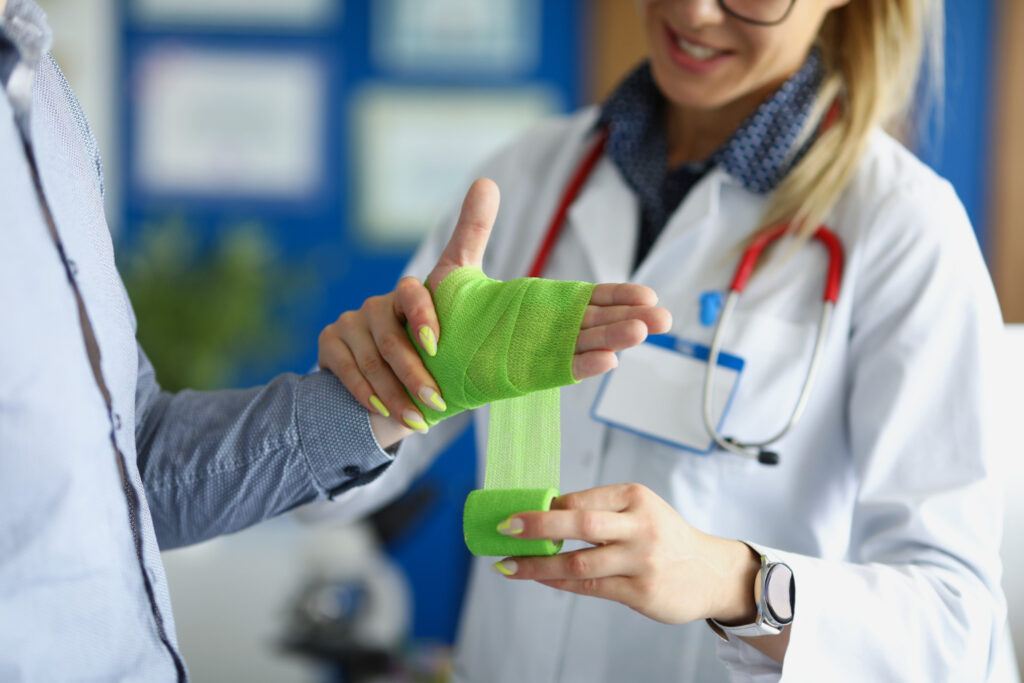First aid treatment for burn injury
Burns can result from any source of excessive heat that damages body tissue. They can be caused by the sun, radiation, chemicals, hot liquids, electrical appliances, fire, etc. A burn injury can be minor or life-threatening, so knowing first aid for burns is essential. Prompt attention can limit damage and promote healing.
Types of burns
Burns fall into three categories according to their severity. Types of burns are:
- First-degree (superficial): Affects only the epidermis (outer layer of skin), causing redness and pain
- Second-degree (partial thickness): affects the epidermis and dermis (the inner layer of the two main layers of skin) and includes symptoms of redness, swelling, blistering, and spotting
- Third-degree (full thickness): affects the outer layers of the skin as well as fat and other tissues, causing the skin to darken or appear white and hard. Third-degree burns may not hurt because nerves may be damaged.
What to do immediately after a burn?
If you or someone around you burns yourself, here are some common steps you should take immediately:
- Move away from the source of the burn.
- Gently wash the area with cold water to reduce the temperature. Never use ice.
- Pull clothes from the wound until they stick; In this case, let the medical professionals take care of it. Remove any jewellery before the area becomes inflamed.
- If you have burns, cover them with a clean cloth or gauze pad.
- Do not use any type of grease, spray, butter or ointment on the burn as they retain heat.
Here are the remedies for the main types of burns, including first-degree, second-degree, and third-degree.
Treatment of first-degree burns
- Place a cool, damp compress over the area or run it under cold water as soon as possible to reduce the heat. Continue to cool the burn for about 10 minutes or until the pain subsides.
- Do not apply butter, powder, ointment, spray or grease to the burn.
- Use a mild liquid soap to wash the area daily.
- You can apply petroleum jelly twice a day.
- If necessary, cover the area with a cool, clean bandage and protect it from sunlight to prevent further damage.
Treatment of second-degree burns
- Immerse the area in cold water for at least 10 minutes. Do not use cold water or ice. It may take up to half an hour for the pain to go away.
- Remove jewelry or clothing that may be too tight if the area is swollen.
- Do not apply oil, butter, ointment or powder to the burn.
- If you are treating a burn at home, wash your hands and gently wash the burn, then dry it with a clean, soft cloth.
- Never break the blister, this increases the risk of infection. They break on their own after about a week.
- If the blisters remain intact, you do not need to dress the burn. If they open, wrap the burn loosely in a non-stick dressing, preferably one designed for burns.
- Change the dressing whenever it becomes dirty.
- If the burn is larger than 2-3 inches or is on the face, hands, genitals, or major joint, seek medical attention immediately.
Treatment of third-degree burns
- Do not soak the burn with water.
- Refrain from applying ointments, butter, greases or sprays.
- Avoid removing clothes stuck in the area.
- Cover the area with a sterile bandage or a clean, loose cloth.
Home remedies for burns
First-degree or second-degree burns can be treated at home. If you are sure the burn is mild, you can take the following steps at home:
- Wash the burn with cold water and clean it gently. Do not apply ointments, greases or sprays.
- If you develop blisters, do not break them. If they break out on their own, gently clean the area and apply antibiotic ointment. Keep the area clean to prevent infection.
- Aloe vera or a mild moisturizer can soothe your burn while it heals.
- Lightly cover the burn with a clean, non-stick dressing.
- If irritation persists, try an over-the-counter pain reliever. Take it only as directed.
- Watch for signs of infection. If you notice any redness or feel faint, contact your healthcare provider.

